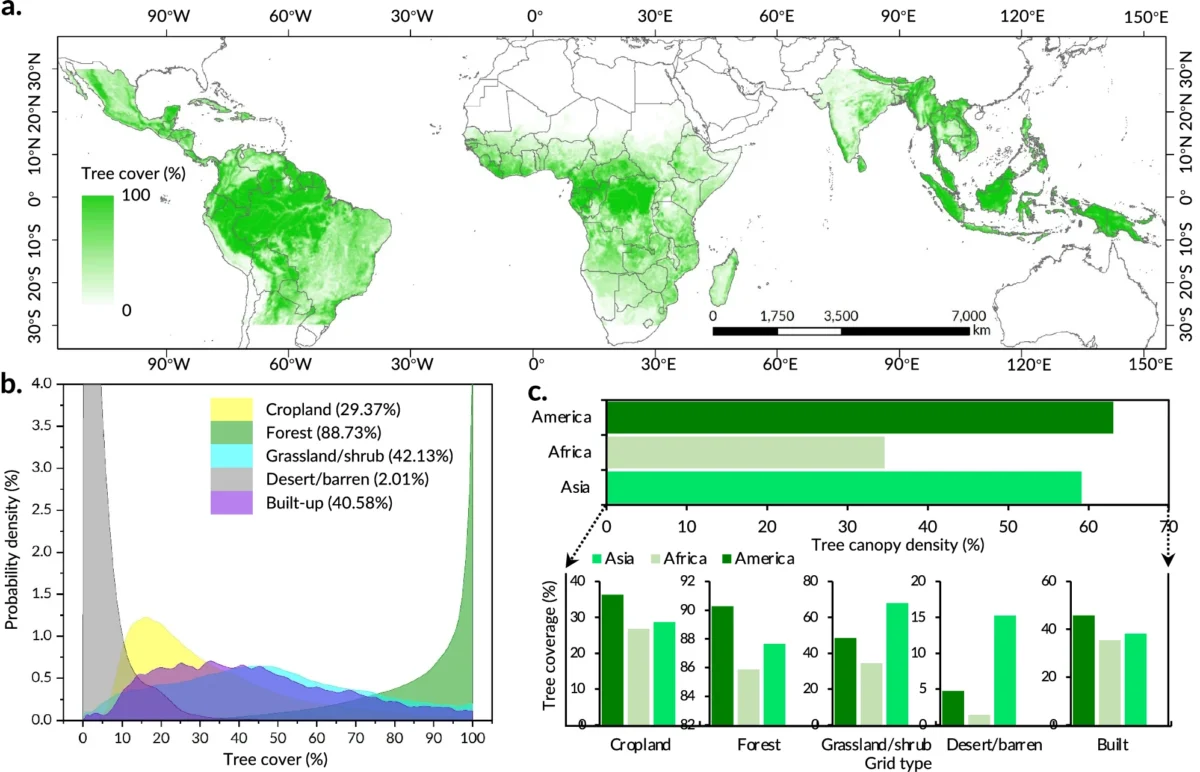Global forest mapping missed 396 million hectares of trees

Despite mounting global pledges to stem deforestation, a new study published in Nature Communications finds that 17% of tropical tree cover—nearly 396 million hectares—has gone overlooked by mainstream forest monitoring systems.
Using high-resolution satellite imagery and machine learning, an international team of researchers has mapped this previously undetected tree cover (PUTC), revealing that significant changes are taking place well beyond the traditional forest frontier.
Between 2015 and 2022, net tropical tree cover shrank by more than 61 million hectares. While most of that loss occurred in forests, over a third happened in areas not typically classified as forest: Croplands, grasslands, and urban spaces. These are precisely the areas where existing tools such as the World Cover dataset, with its 10-meter resolution, tend to fail.
“Neglecting scattered trees has led to a systematic underestimation of ecological degradation,” said Liu Shidong, the study’s lead author, via a Chinese Academy of Sciences press release.
The study found that 54% of tree cover loss was linked to land-use change and deforestation, while 44% of gains were driven by increased rainfall. Human activity—including logging and expansion of agriculture—emerged as the dominant driver of decline. The most substantial gross losses occurred in Brazil, Indonesia, and the Democratic Republic of Congo.
Beyond simply identifying losses, the research highlights a mismatch between deforestation data and restoration goals. In 2021, 141 nations pledged to halt forest loss by 2030 under the Glasgow Declaration. Yet the study recorded a gross gain in tree cover of just 6.2 million hectares across the tropics, barely a tenth of what was lost. Brazil, for instance, gained only 1.36 million hectares over the eight-year period, far short of its Bonn Challenge target of restoring 4.28 million.
Much of the newly detected cover sits in places long classified as treeless. In Africa, for example, more than a quarter of shrubland and grassland tree cover had been missed. In Asia, significant PUTC was found in croplands and cities. These trees matter: they sequester carbon, cool microclimates, and sustain livelihoods.
The methodology, which achieved 97.3% accuracy, could offer a more consistent and scalable way to track global tree dynamics, argue the authors.
“Fine-scale mapping is essential for credible climate mitigation,” said Wang Li, the project’s principal investigator, in the release.
The findings call into question long-standing assumptions about where trees grow—and where they are disappearing. In the battle against climate change, it seems, the world has been flying partially blind.
🔬 Shidong Liu et al, Mapping previously undetected trees reveals overlooked changes in pan-tropical tree cover, Nature Communications (2025). https://www.nature.com/articles/s41467-025-60662-z